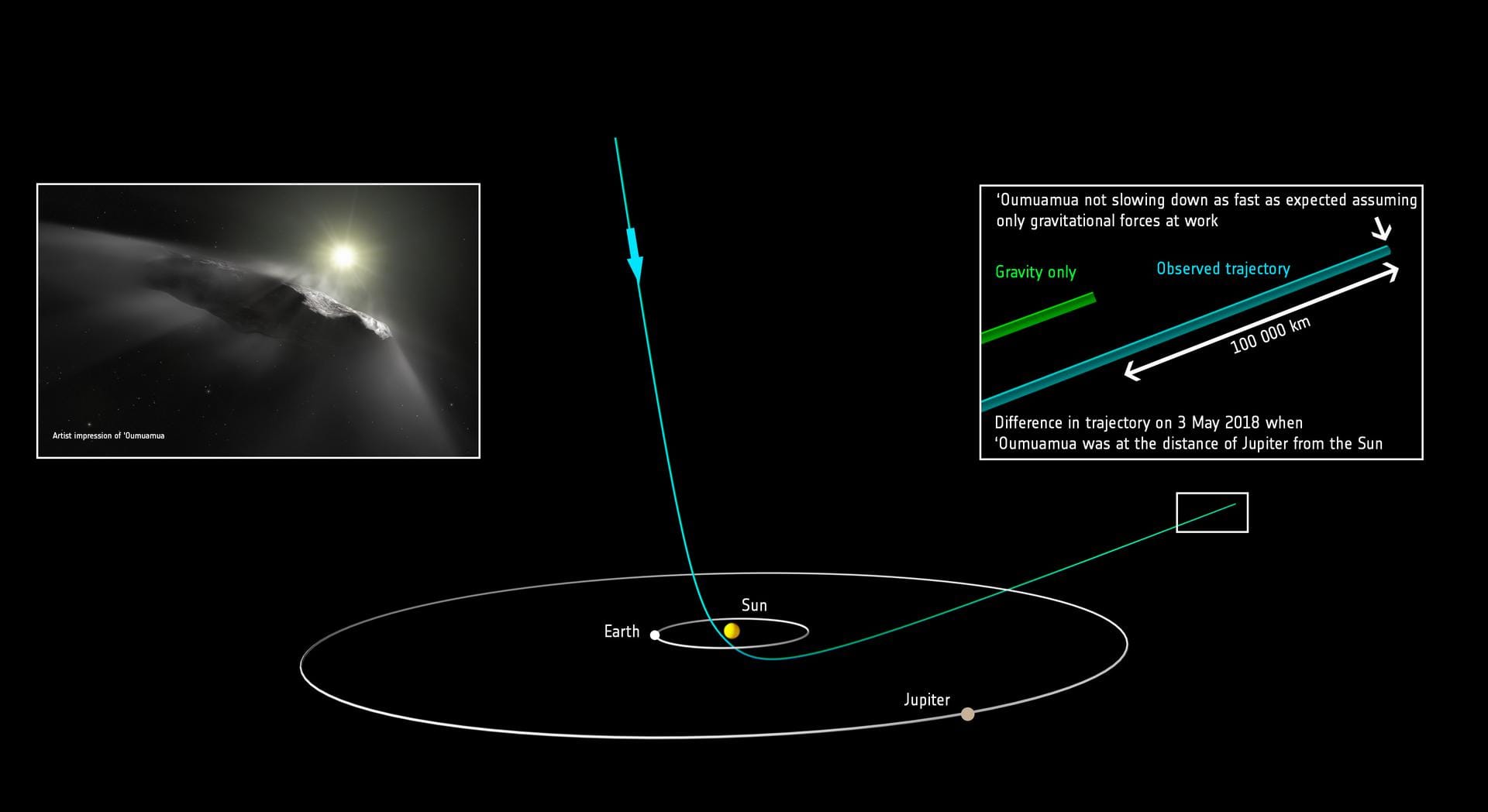In October 2017, astronomers discovered an interstellar object traveling through our Solar System for the first time in the history of science. The amazing interstellar “guest” called Oumuamua turns out to be so atypical for objects in the Solar System that by this time scientists are trying to understand its nature: unusual shape, high speed, color, composition. But the most surprising thing about Oumuamua was that it had non-gravitational acceleration, which had long remained a mystery to astrophysicists. Something in the object caused it to accelerate. At first, this phenomenon caused only conspiracy theories, like the built-in alien engine, but scientists found a rational explanation for it.

The team of researchers offers a simple explanation: the acceleration of Oumuamua was given by hydrogen released during the flight through our planetary system. Hydrogen gas inside an interstellar object could be released without the sublimation of ice on the surface or the formation of dust, which in the case of comets would lead to the appearance of a coma. The findings of the study are published in Nature.
The team suggests that the object had hydrogen lying deep inside and was heated by the action of high-energy particles, such as cosmic rays. When heated by the Sun, hydrogen began to be released with a reactive effect, changing the orbit of the interstellar object and giving it acceleration.
But Oumuamua was so small that the visible effect of the release of gases was not noticeable by our telescopes, especially by the Pan-STARRS1 rapid response system – the first instrument to notice the object when it raced at a speed of about 476 thousand km/h. Its brightness fluctuates sharply, indicating to scientists that it is about 10 times longer than the width.

Another interstellar object – 2I/Borisov – was spotted in 2019. But it was much more like an ordinary comet, so it couldn’t be compared to Oumuamua.
“It is unlikely that we will be able to definitively confirm the nature of the non-gravitational acceleration of Oumuamua. Our model is a general assumption. Therefore, if we discover additional interstellar objects with a similar structure in the future, we will be able to test our hypothesis,” explained Jennifer Bergner, an astrochemist from the University of California at Berkeley and lead author of the study.
Follow us on Twitter to get the most interesting space news in time
https://twitter.com/ust_magazine

